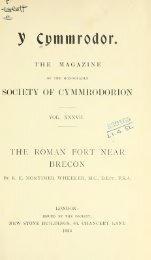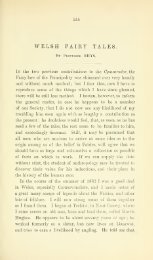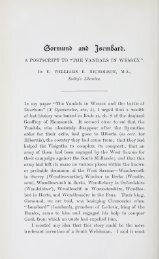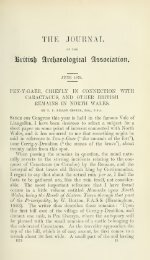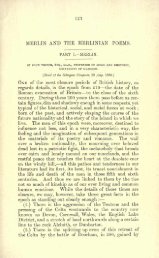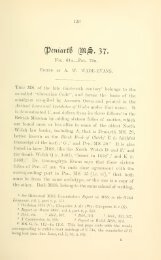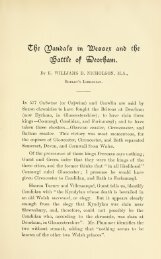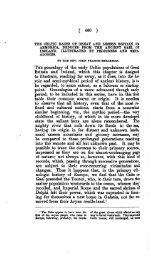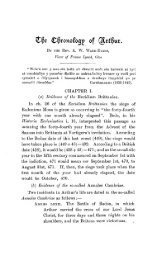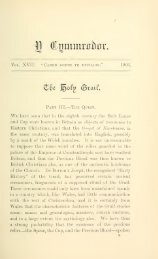An Introduction to Early Welsh - Arthur Pendragon of Wales
An Introduction to Early Welsh - Arthur Pendragon of Wales
An Introduction to Early Welsh - Arthur Pendragon of Wales
Create successful ePaper yourself
Turn your PDF publications into a flip-book with our unique Google optimized e-Paper software.
49.]<br />
THE PRONOUN. 35<br />
arglwyd, heb ynteu, minneu a allaf dy rydhau ditheu. sef ual y<br />
gallaf "Lord" said he, "/ can free.<br />
thee. This is how I can do it'"<br />
SSef y gwelynt varchawc then they saw a horseman. In a similar<br />
way ef is used by itself, e.g. pan dyuu y thymp idi, ef a dyuu y<br />
hiawnbwyll idi when her time <strong>of</strong> labour came, then her right senses<br />
came <strong>to</strong> her.<br />
48. Infixed Pronoun.<br />
Sing.<br />
1. me -m- us -n-<br />
Plur.<br />
2. thee -th- you -ch-<br />
3. him, her, it -S-, -6- them -S-, -e-<br />
REMARKS.<br />
49. (a) The infixed pronoun may be strengthened by putting<br />
the corresponding simple or conjunctive pronoun after the verb,<br />
e.g. a thydi am gwely<br />
i and thou shalt see me, euo ath gud ditheu<br />
he will hide thee.<br />
(b) In the third person -e- is used after the relative particle a,<br />
e.g. mi ae gwelaf I see him, and after the conjunction tra, e.g. trae<br />
llathei pob tri while he slew them by threes BB. 48% mi ae kynhalyaf<br />
hyt trae gallwyf / shall maintain it as long as I can Hg. I, 4 ;<br />
elsewhere -s- is used. After the verbal particle yd-, however, if<br />
the verb begins with a consonant, there is no visible pronoun <strong>of</strong><br />
the third person, e.g. y gwelaf / see her RB. 278, 6; a phan i gweles<br />
meibion Collwyn and when the sons <strong>of</strong> Collwyn saw him MA. 729*;<br />
if the verb begins with a vowel yh appears, e.g. y hanuones sent it<br />
WB. 104, y hedewynt they left them WB. 186; similarly after yny<br />
until, e.g. ny dygaf un i daryan yny hanuono Duw im / shall not<br />
bear any shield till God send it <strong>to</strong> me Hg. I. 15. After pan when<br />
the infixed pronoun is regularly preceded by y-, e.g. pan yth<br />
wnaethpwyt ti when thou wast made ;<br />
in the third person<br />
it is<br />
pan y(h), e.g. panny harcho udunt when he asks it <strong>of</strong> them LA. 56.<br />
(c) In early poetry in connexion with ny and ry there are in the<br />
third person special forms, nwy, nyw, rwy, ryw, used when the<br />
verb is relative, e.g. ir nep nuy hatnappo<br />
<strong>to</strong> one who does not




